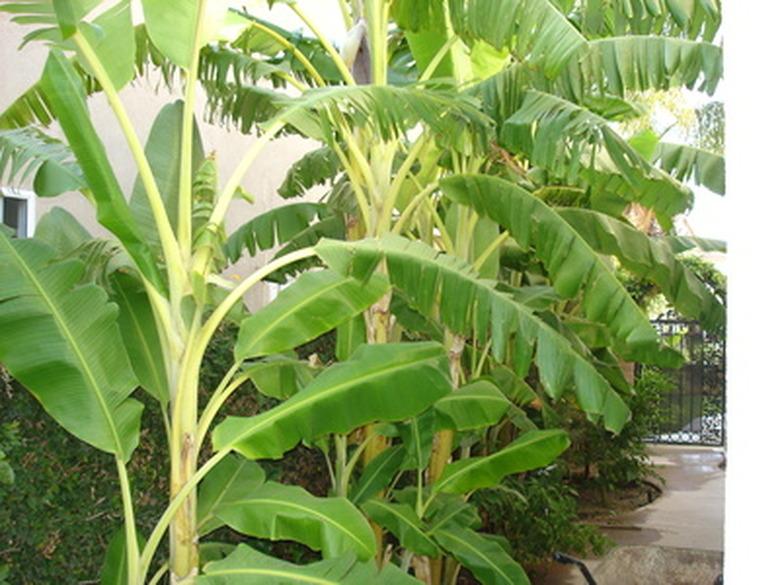What Are The Parts Of A Banana Plant?
The parts of a banana plant (Musa spp.) may appear so visually complex that you might think it has its own, individual morphology — and in some cases, it does. A banana plant has some typical botanical structures such as rhizomes, leaves, stamens and ovaries. But it also has a pseudostem, an inflorescence, a rachis and a thyrse.
How do these all fit together to create the tropical beauty that is the banana? First off, the banana is not a tree or a palm, two terms frequently used to describe it. Rather, it's an herbaceous herb, the largest in the world.
Tip
A banana plant's parts include its underground rhizome, pseudostem, leaves, flowers and fruit.
From Rhizome to Leaf
At the base of a banana plant is a structure called a rhizome, which is an modified underground stem. The rhizomes form clumps called a "mat," which is a banana-specific term for the massive, underground clump that produces the aboveground shoots, called ramets. These shoots — genetic copies of the parent plant and also called "pups" — become new banana plants and are the way a banana propagates itself. In Hawaii, the only location in the United States that grows bananas commercially, these are commonly known as keikis.
As the shoots grow, they form enormous, juicy stems, called pseudostems because they are neither trunks nor actual stems but rather made up of leaf sheaths that are tightly packed. As the pseudostem grows in height, banana leaves emerge, tightly rolled like cigars and, in fact, called "cigar leaves." They are coiled tightly and very fragile to start with. These cigar leaves sprout a tiny extension at their tip called the precursory appendage. As the leaf opens, this tip falls off.
The leaf unfurls over seven to 20 days, depending on conditions, and is the primary way a banana photosynthesizes. Leaves can grow to 9 feet long and 4 feet wide, depending on the cultivar. The leaf is comprised of a midrib and a blade (the midrib is the midseam that separates the two leaf blades) supported by a sheath. The midrib starts as the petiole atop the sheath.
From Stem to Flower
Once the banana plant has reached full height and has a full complement of leaves, its real stem emerges from the center of the pseudostem's top. The primary parts of the stem are the underground rhizome, the aerial stem (the stem shooting skyward that actually produces the leaves) and the peduncle. When the aerial stem appears atop the plant, it becomes the peduncle — and from the peduncle come the flowers.
Here's where banana nomenclature differs from traditional botany terminology. The term "peduncle" usually refers to a stalk, or a fixed, main axis that actually supports the flower. But for bananas, the peduncle is just the part of the stalk between the crown of the plant and the fruit. Rather, it is the rachis, a long, ridged stalk, that develops to support the flower and fruit.
And finally — to the flower. The banana flower is that sensational, tropical, deep purple bud first appearing erect from the stem top. It soon droops downward in a complex structure that produces the fruit.
From Flower to Fruit
The banana flower is encased in an inflorescence, called a thyrse in banana terminology. It contains female flowers, which will become the fruit, as well as male flowers which have little use in cultivated banana varieties. The female flowers, called pistillate flowers, appear first. The female flowers have ovaries: These develop into the banana fruit without being pollinated. As the flower clusters develop, each will become a "hand" of bananas, which is the bunch you typically find in a grocery store.
As the fruit develops, the lower part of the inflorescence elongates and produces the male bud. The male flowers also have stamens that do produce pollen in some cases, but the pollen is usually sterile. The bud, sometimes called the "bell," contains clusters of male flowers.
After a banana has fruited and the fruit has been harvested, the pseudostem is cut down to the ground to make way for the new pups emerging from the rhizomes. And the process begins again.
